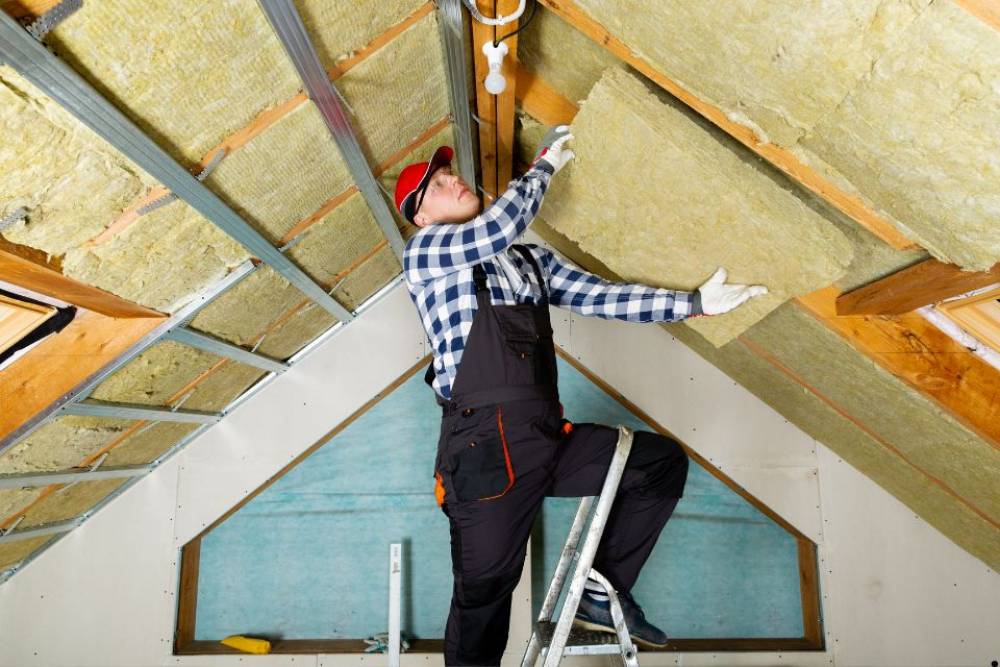
The Role of Roof Insulation in the Installation Process
Roof insulation plays a crucial role in a roofing system's overall performance and longevity. Proper insulation helps maintain comfortable indoor temperatures and contributes to energy efficiency, soundproofing, and moisture control. When considering a roofing installation by E4 Construction of Georgetown, it is essential to understand the significance of roof insulation in maximizing the benefits of the entire system. We will explore the various aspects of roof insulation, including its types, installation methods, and the long-term advantages it offers homeowners.
Understanding Roof Insulation Types
Several types of roof insulation materials are available, each with unique properties that make them suitable for different roofing systems. Common types include fiberglass batts, spray foam, rigid foam boards, and cellulose. Fiberglass batts are widely used due to their affordability and ease of installation. They come in pre-cut sizes, easily fitting between rafters and joists. On the other hand, spray foam insulation offers superior air sealing properties, expanding upon application to fill gaps and create an airtight barrier. Rigid foam boards provide excellent thermal resistance and can be used in various applications, including low-slope and flat roofs.
Cellulose insulation, made from recycled paper products, is an environmentally friendly option that can be blown into spaces for maximum coverage. Each type of insulation comes with its R-value, which measures thermal resistance. The higher the R-value, the better the insulation's ability to resist heat transfer. Choosing the right insulation type depends on factors such as climate, budget, and the specific needs of the roofing system. By understanding the various insulation options available, homeowners can make informed decisions that will enhance the effectiveness of their roof insulation.
The Installation Process of Roof Insulation
The installation process for roof insulation is an integral part of the overall roofing installation. Proper installation is vital to achieving the desired performance and efficiency from the insulation material. Generally, the installation begins with assessing the roof structure and the existing insulation, if any. This assessment allows for identifying areas requiring additional insulation and helps determine the best insulation type to use.
Once the insulation type is chosen, the next step is to prepare the installation area. This may include cleaning the roof surface, sealing gaps or leaks, and ensuring that the roofing materials are compatible with the chosen insulation. Depending on the insulation type, various methods may be employed during the actual installation. For example, fiberglass batts may be laid between rafters, while spray foam insulation may be applied directly to the roof deck.
Care must be taken during the installation process to ensure that insulation is evenly distributed and properly fitted, as uneven installation can lead to thermal bridging and reduced insulation effectiveness. Additionally, proper ventilation is critical during installation, as it prevents moisture buildup, which can compromise insulation performance. Ultimately, the installation process aims to create a seamless, energy-efficient barrier that enhances the roof's overall performance.
The Impact of Roof Insulation on Energy Efficiency
One of the most significant benefits of roof insulation is its impact on energy efficiency. A well-insulated roof can dramatically reduce heating and cooling costs by minimizing heat transfer indoors and outdoors. In winter, effective insulation keeps heat from escaping, allowing homeowners to maintain a comfortable temperature without overworking their heating systems. Conversely, during summer, insulation prevents excessive heat from entering the living space, reducing the strain on air conditioning systems.
This energy efficiency translates into lower utility bills and a reduced carbon footprint. Many homeowners may need to realize that much energy loss occurs through the roof. Therefore, investing in quality insulation can lead to substantial long-term savings. Moreover, improved energy efficiency can enhance a home's resale value, making it a smart financial decision for homeowners looking to invest in their property.
Additionally, roof insulation plays a vital role in maintaining indoor air quality. By creating a thermal barrier, insulation helps control the home's humidity levels. This is particularly important in areas with high moisture, as excessive humidity can lead to mold growth and other indoor air quality issues. With effective insulation, homeowners can enjoy a healthier living environment, which is especially beneficial for those with allergies or respiratory conditions.
Roof insulation is a critical element of any roofing installation that should be noticed. From improving energy efficiency to enhancing moisture management and indoor air quality, the benefits of effective insulation are numerous and far-reaching. We have explored various insulation types, installation processes, and the significant impact insulation has on energy savings and roof longevity.
Investing in quality roof insulation pays off in the long run, offering both financial savings and improved comfort. Homeowners should prioritize insulation when considering roofing options, as it plays a pivotal role in ensuring the overall effectiveness of the roofing system. By understanding the importance of roof insulation, homeowners can make informed choices that lead to a more sustainable and efficient living environment.

